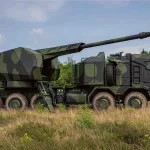APAC Outlook Magazine talks to Ling Chee Hoe about why ‘IT at the network edge’ is so important for enterprises today.
Q&A WITH LING CHEE HOE
Why is ‘IT at the network edge’ so important for enterprises today?
Ling Chee Hoe (LCH): After years of consolidation and centralisation, IT organisations are now turning their attention to the edge of the network to improve interactions with customers and applications. As organisations grow their use of analytics, location-based services, and personalised content, edge of network facilities becomes critical in achieving competitive advantage. Capitalising on this opportunity will require fast deployment, intelligent and high availability infrastructure deployed close to users. Just as organisations struggled to keep pace with computing demand in the first decade of this century, enterprises that don’t address the infrastructures related to the edge will find themselves unable to keep pace with the expansion of applications which are growing exponentially at the edge.
What are the most common causes of data centre outages and how much of an effect can they have on downtime?
LCH: The following figures serve to only emphasise the fact that data centre breakdown is detrimental to anyone’s business. That’s why it is critical to invest in the right IT infrastructure to ensure system availability and resiliency to avoid costly outages.
According toa 2013 study by Ponemon Institute on the cost of data centre outages, the most common causes of data centre outages are UPS battery failure (55%), human error (48%) and UPS capacity exceeded (46%).
Other causes of data centre outages are:
- Cyber attack (34%)
- IT equipment failure (33%)
- Water incursion (32%)
- Weather related (30%)
- Heat related/CRAC failure (29%)
- UPS equipment failure (27%)
- PDU/circuit breaker failure (26%)
Meanwhile, the most frequently cited total expense of unplanned outages includes:
- IT equipment failure ($959,000)
- Cyber crime ($882,000)
- UPS system failure ($478,000)
- Water, heat or CRAC failure ($517,000)
- Generator failure ($501,000)
- Weather incursion ($436,000)
- Accidental/human error ($380,000)
Moreover, the same study found that unplanned data centre outage costs about US$7,900 a minute, while a total data centre outage, with a recovery time of 119 minutes, costs US$901,000.
In line with this, tell me what Emerson is doing in order to ensure resilience at the network edge for its customers?
LCH: Emerson Network Power offers technology and solutions that ensure agility, increase uptime resiliency at the network edge, which includes the following:
· Reliable, resilient and fault-tolerant UPS systems to protect against surges, outages and voltage fluctuations. Today’s users expect applications to be available. However, as you support more applications at the edge, managing remote systems can present numerous challenges. Ineffective power quality can pass through your UPS units and cause undetected problems. Our UPS solutions provide true, resilient power protection with a proven on-line UPS that protects irrespective of the quality of incoming power and scalability to meet capacity, redundancy or battery times.
- Rapidly deployable converged solutions with integrated data centre infrastructure management (DCIM) technology to supportbusiness growth. Today, users want new IT equipment and applications deployed and operating as quickly as possible. What’s more, your staff want that equipment installed quickly, easily and accurately. Our converged and integrated solutions efficiently combine power management, thermal management and IT management in a single plug-and-play infrastructure and are ready to use from day one. Our converged solutions portfolio includes single-rack systems to aisle-based modules which are suitable and scalable for small branch offices and higher density medium sized data centre facilities.
- Total high-efficiency solutions that improve CAPEX and OPEX. Loss of revenue due to lapses in productivity is both detrimental and preventable. Effective infrastructure cost managements require a holistic approach; enabling the network edge is not just about upgrading individual components of the network, the answer is creating a holistic strategy for your core to edge. Emerson Network Power can partner with organisations to offer total solutions and services to manage their total core and edge IT assets and infrastructures.
What is the rationale behind the creation of these converged solutions and what has the uptake been like in comparison to traditional data centre infrastructure solutions?
LCH: The rationale that’s driving the growth of converged data centre solutions is driven by the uptick in demand and businesses becoming increasingly competitive, meaning that ‘time to deploy’ plays a major role for clients. The rapid growth and expansion of social and mobile networks has led enterprises to use converged data centre solutions as a means to foster faster, wider communication with external audiences. Furthermore, growth of network end-points, in other words the emerging Internet of Things (IoT) paradigm generates large amount of data from diverse locations, increasing the need for better efficiency and effectiveness to process and store data.
Many enterprises are looking to reduce data centre complexity and improve efficiency, allowing them to focus their resources on providing services to their customers instead of worrying about their backend infrastructure. Cloud computing, desktop virtualisation and SaaS are bringing new capabilities, cost saving and efficiencies to enterprises.
In summary, what we’re seeing is that converged solutions were developed to help organisations deploy and scale applications faster while reducing risks and total costs. With rapid changes in many markets being driven by innovation, digitisation and mobility, the need for speed that a convergence system delivers is greater than ever and many organisations are recognising this. Combining the attributes of fast deployment, inherent scalability, demand for excellent uptime and network quality, this approach is becoming an attractive alternative for supporting growth in this space.
What do your integrated solutions offer in terms of reliability and efficiency?
LCH: Our integrated solutions are preconfigured with power management, thermal management and DCIM in accordance with design best practices; specifically designed to optimise the efficiency and availability of today’s data centre infrastructures, while offering the modularity for future expansion for enterprises.
The predominance of integrated solutions, compared to the conventional setup includes:
- More efficient power usage, space utilisation and IT employee productivity;
- Integrated solutions which are pre-tested to optimise the operation of the total environment and future infrastructure upgrade;
- Scalable design which reduces cost and allows future growth;
- Standardised training and maintenance of the whole of network edge network using our Integrated Solutions;
- Full visibility and monitoring of IT infrastructure and facility utilisation, which allows more effective resource management, planning and faster adaptation to the rapid changing IT environment;
- Manage interdependence of various components of IT infrastructure with a singular DCIM platform.
How does the elimination of challenges at the network edge fall into Emerson’s own sustainability strategy? How do you balance critical availability and energy efficiency for your customers?
LCH: It is essential to achieve both critical availability and energy efficiency in data centres without sacrificing overall data centre performance. Data centre efficiency is not only dependent on power usage effectiveness (PUE) but also on overall data centre availability by means of controlling unplanned downtime. As an example, a data centre with low PUE can experience poor efficiency due to inappropriate design of system level architecture and thus losing data centre operation for few minutes. This results in clients losing revenue or experiencing large cost of downtime. Thus, availability plays an important role in data centre efficiency improvement
Moreover, one of the most important challenges that must be addressed in any data centre design project is configuring systems to meet current requirements, while ensuring the ability to adapt to future demands. In the past, this was accomplished by oversizing infrastructure systems and letting the data centre grow into its infrastructure over time. That no longer works because it is inefficient in both capital and energy costs. The new generation of infrastructure systems are designed for greater scalability, enabling systems to be sized correctly during the design phase; and progressively adding module by module as the data centre grows. This does not call for UPS scalability alone, but also the scalability of integrated infrastructure in a standardised manner. This includes scalability of the infrastructure, power distribution, thermal management, and DCIM as well.
Emerson Network Power, by virtue of focusing on customers’ solution demand and its wide variety of products and solution capability, is uniquely positioned to deliver by way of deploying its converged solutions, from a small scale ‘Smart Cabinet’ to large scale customised ‘Smart Module’ containerised solutions.
Together with data centre infrastructure management (DCIM), we provide a holistic view of data centre operations, optimising the entire system from IT, power to thermal management, providing the best efficiency and availability with unparalleled real time visibility.
See the illustrated full article in the latest issue of APAC Outlook here.
































